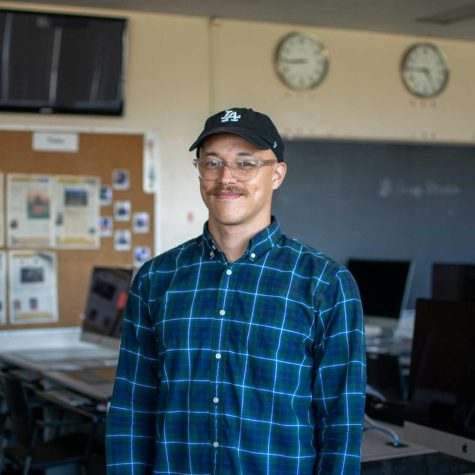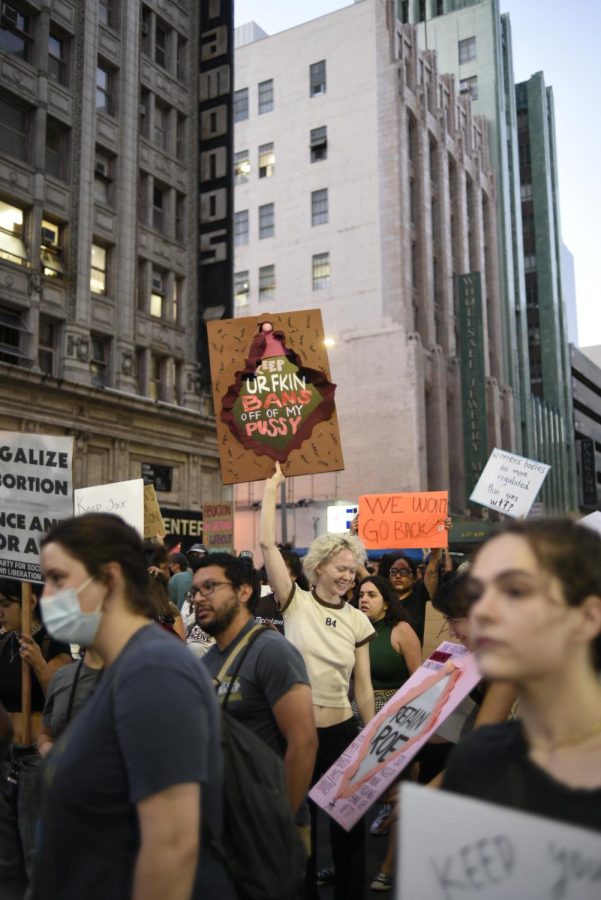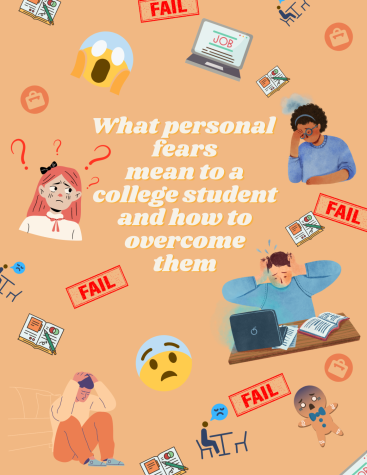Abortion access at CSUs
Abortion access advocates practicing their First Ammendment right to assemble and express their views through protest. In June, many Americans did that in the wake of the Supreme Court decision.
In the aftermath of Roe v. Wade’s overturning, many across the country have raised concerns over abortion access. In California, where abortion is legal, college students have raised accessibility concerns when seeking out abortions.
A virtual panel discussion at Cal State LA in late October featured reproductive justice activists discussing the passing of the College Student Right to Access Act (SB 24), which will go into effect in 2023.
The bill, first introduced in 2018, states that all California public colleges will be required to offer “abortion by medication techniques” at their student health centers, with California being the first state in the nation to do so.
Lorena Garcia Zemeňo, policy manager for California Latinas for Reproductive Justice, discussed how the bill would address students’ reproductive needs.
“There’s recent research that estimates that approximately every month, 1,038 students at all 34 University of California and California University campuses seek abortions from offsite healthcare assistance,” said Zemeňo. “This bill is to address that need that we know exists…to make sure that it’s accessible for students at their campus health centers.”
A presentation by Zemeňo detailed the steps necessary to provide medication for abortion.
- Confirming that the pregnancy is not ectopic and no more than 10 weeks.
- Affirming that the abortion is the patient’s decision.
- Provide a set of pills with instructions for use.
- Instructing the patient on what to expect and how to access care in the event of an emergency.
Sonja Goetsch-Avila, a project coordinator for the Person-Centered Reproductive Health Program, was the second keynote speaker featured on the panel.
Goetsch-Avila stressed the importance of having on-site campus access for students seeking medication abortions.
“There are folks juggling school, jobs, multiple commitments like providing support to children or loved ones,” Goetsch-Avila said. “For students living on campus, getting to the nearest clinic can be a barrier in itself. When we also think about the barriers that specifically queer, trans, and non-English speaking folks face, it can be difficult to find a provider that is gender-affirming and inclusive.”
Zemeňo highlighted how the aftermath of Roe V. Wade’s overturning led many to false assumptions about California’s progressiveness.
“In California, there are 20% more anti-abortion clinics, known as crisis pregnancy centers (CPCs), than actual abortion clinics,” Zemen said. “That contextualizes where we are at as a state…we know there are so many things we need to address before we claim that we are a reproductive freedom state.”
She continued by examining class and race factors that leave many disproportionately affected by a lack of accessible abortion care.
“Pregnancy-related mortality for Black birthing people is six times greater than any other racial or ethnic group,” Zemeňo said. “California has the largest population of unhoused individuals; one in three women identified folks who were in the shelter experienced domestic violence. The mass incarceration of people identifying as women has risen 742% since the 1980s.”
Goetsch-Avila concluded by delving into how inclusion plays a role in the ongoing fight for abortion rights.
“We must ensure that we are approaching our organizing in an intersectional way,” Goetsch-Avila said. “We also need to understand that when a law is passed, the fight’s not over. Recognize just how much farther we need to go to achieve true reproductive justice and liberty in California.”
Correcrion made on Nov. 15 at 2 pm. In a quote from Lorena Garcia Zemeňo, the policy manager for California Latinas for Reproductive Justice, they said that there are 34 CSU and UC college campuses combined when there are actually 32 campuses.
Jessica is a third year journalism major and creative writing minor who currently works as reporter for the University Times. In her spare time, Jessica...

Erik Adams is a third-year journalism major and multimedia reporter at The University Times. He enjoys covering culture, history and social issues. He...









